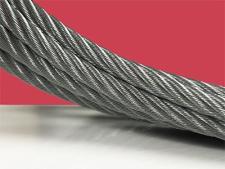Cable manufacturers looking for resilient and corrosion-free materials have chosen stainless steel as a reliable metal for ages. Stainless steel is chosen due to its cost-effectiveness and high tensile strength. It's also the preferred choice due to its durability and integrity retention.
However, precision applications require precision materials, which stainless steel cannot provide. Tungsten is fast gaining popularity as the industry-favorite material for manufacturing surgical robots. This is because tungsten is more flexible and abrasion resistant at equivalent sizes of stainless steel. Additionally, tungsten is 30 percent stronger than stainless steel.
Why Tungsten?
Due to tungsten wire properties, the cables are able to function for longer durations and minimal maintenance or the need for replacement. Tungsten wire has excellent resistance to temperature, strength and flexibility. Notably, it is one of the strongest materials ever discovered.
Tungsten also offers unrivaled flexibility over radii as small as 1 mm. When you apply a similar tight bending radius to stainless steel cables, they'll likely fail due to bending stresses over numerous cycles. Because of the inherent properties of tungsten wire ropes, it has shown to be more malleable and thus improves cycle counts compared with equivalent diameter and construction stainless steel cables.
Tungsten Cable Constructions
Tungsten is among the most flexible of all metals used in mechanical cable constructions. Here are some of the common tungsten cables used in surgical robotics.
19X19
This is one of the most common tungsten cable constructions used in surgical robotics. This cable construction consists of 361 individual wire filaments. Depending on the finished cable diameter, these filaments may be as small as .0005 inches in diameter. What makes this such a common construction for surgical robots is its outstanding flexibility and tensile strength.
Due to its flexibility and number of wires, it has a lower tensile strength than other constructions of equivalent diameter, yet higher than stainless steel cable.
7X37
This construction has fewer wires than the 19x19, consisting of 259 wires. As such, it isn't as flexible as the 19x19, or the 7x49, which contains 343 wires. Still, the flexibility is sufficient for certain surgical robotics applications, and it has a higher tensile strength than the former, about 20% more.
8X19
This construction comprises 201 wires and is therefore not as flexible as the 7x37 or 19x19 constructions. Because 8x19 tungsten cable has fewer filaments, and thus uses larger wire diameters, this construction will possess slightly higher breaking strength than the more flexible 7x37 and 19x19 constructions in equivalent diameters.
This cable has excellent stiffness and medium-range flexibility, coupled with its superior tensile strength, makes it an ideal selection within the surgical robotics field.
7X49
Comparable to 19x19 tungsten cable, 7x49 construction, which contains 343 wires, is equally flexible and possesses similar tensile strength. Because of the larger quantity of filaments, engineers designing this construction must be mindful of the inherent risks of standing this construction. Sava’s engineers take special measures to control these conditions to produce optimally functioning tungsten cables.
19X37
This is another tungsten cable construction that offers the highest flexibility and lowest tensile strength among the different constructions. A 19x37 cable consists of 19, 1x37 strands. Each 1x37 strand is made starting with a 1x7 strand, then a 1x19 strand, and finished to create the individual 1x37 strands. These 1x37 strands are subsequently twisted to create a 7x37 and then finally, a 19x37 completed cable. This 703 wire cable can use filaments as small as 0.0005 inches in diameter.
Key Takeaway
-
Tungsten cables are currently the strongest, yet most flexible in the surgical robotics market.
-
These cables come in different constructions, each offering unique features and capabilities.
-
Cables with more wires are generally more flexible.
-
The most flexible tungsten cable is the 19x37, which has 703 wires.
Carl Stahl Sava Industries is a leading tungsten cable manufacturer, offering a wide range of precision cables for different sectors. If you need tungsten cables for surgical robots or any other related product, you can always count on us. Sava’s engineers will recommend the right tungsten cable for any application. Contact us and have all your questions answered.






